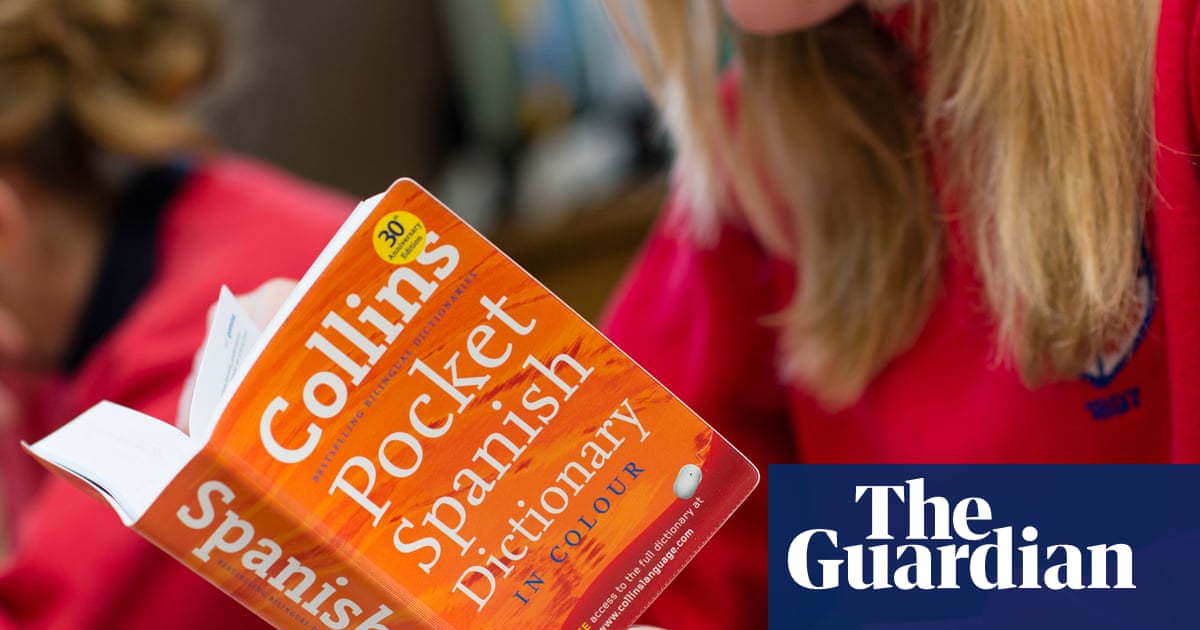Ministers must make access to language learning a national priority, experts have said, after research showed that children from more deprived areas ofEnglandare disproportionately denied the chance to learn a foreign tongue.
This year’sLanguage Trendsreport by the British Council surveyed 1,000 primary, secondary and independent schools and found that the proportion of pupils studying a modern language GCSE in less affluent English state schools was 38% lower than in the most affluent and 12% lower than the average.
While 69% of year 10 pupils at the most prosperous state schools are studying a language for GCSE, just 47% of those at the least affluent are.
The report’s findings show that progress towards the previous government’s Ebacc target of 90% of pupils studying a language to GCSE is going backwards. Although official entries to language GCSEs and A-levels went up in 2024 for the first time in many years, they havesince dippedand remain concentrated in fewer schools.
On average, 53% of year 10 pupils at state secondaries are learning a language for GCSE, down from 54% last year.
Prof Charles Forsdick, the lead fellow for languages at the British Academy, said: “We’re at real risk of language education being accessible only to young people in the most affluent schools in England. This would be a disaster, shutting many young people out of essential education.”
Jean Coussins, the crossbench peer who is co-chair of the all-party parliamentary group on modern languages, said: “If the Ebacc disappears and with it the target for 90% of pupils to take a language GCSE, the government needs to ensure what replaces it still ensures most young people study a language to 16, if not 18.
“Otherwise, these data show there is a real risk that A-level languages could disappear from state schools altogether and evenGCSEscould become the preserve of affluent state schools and the independent sector.”
German remains the hardest-hit language despite being themost sought-after languageby employers, and access to it is becoming even scarcer at state secondaries.
While nearly 90% of schools offer French to GCSE and 76% offer Spanish, only 40% offer German, and even then only in more well-off areas. Only one secondary among respondents in the least affluent areas offers German at GCSE, compared with nearly three-quarters of better-off state schools and two-thirds of independent schools.
At A-level, only 27% of state secondaries offer German, compared with nearly half offering French and 44% offering Spanish. Less than a third of the most disadvantaged secondaries offer any language at A-level. In contrast, 58% of independents offer A-level German, while about 80% offer French and Spanish post-16.
Sign up toFirst Edition
Our morning email breaks down the key stories of the day, telling you what’s happening and why it matters
after newsletter promotion
But even Spanish and FrenchA-levelsare struggling. More than a third of schools’ A-level classes have five pupils or fewer in them, the research found, with 8% of schools discontinuing German, 7% French and 3% Spanish A-levels during the last three years.
The German ambassador to the UK, Miguel Berger, said the findings were concerning. “Learning a modern foreign language like German should be an opportunity for everyone, not just a privilege for the few,” he said. “German, in particular, is an extremely practical and sought-after skill – it’s highly in-demand among British employers.”
Vicky Gough, the British Council’s schools adviser, said such profound inequalities in access to language learning had serious repercussions. “On a national level, this trend threatens to shrink the UK’s talent pool, erode linguistic and cultural diversity and weaken our global standing in diplomacy, trade, and international relations,” she said.
